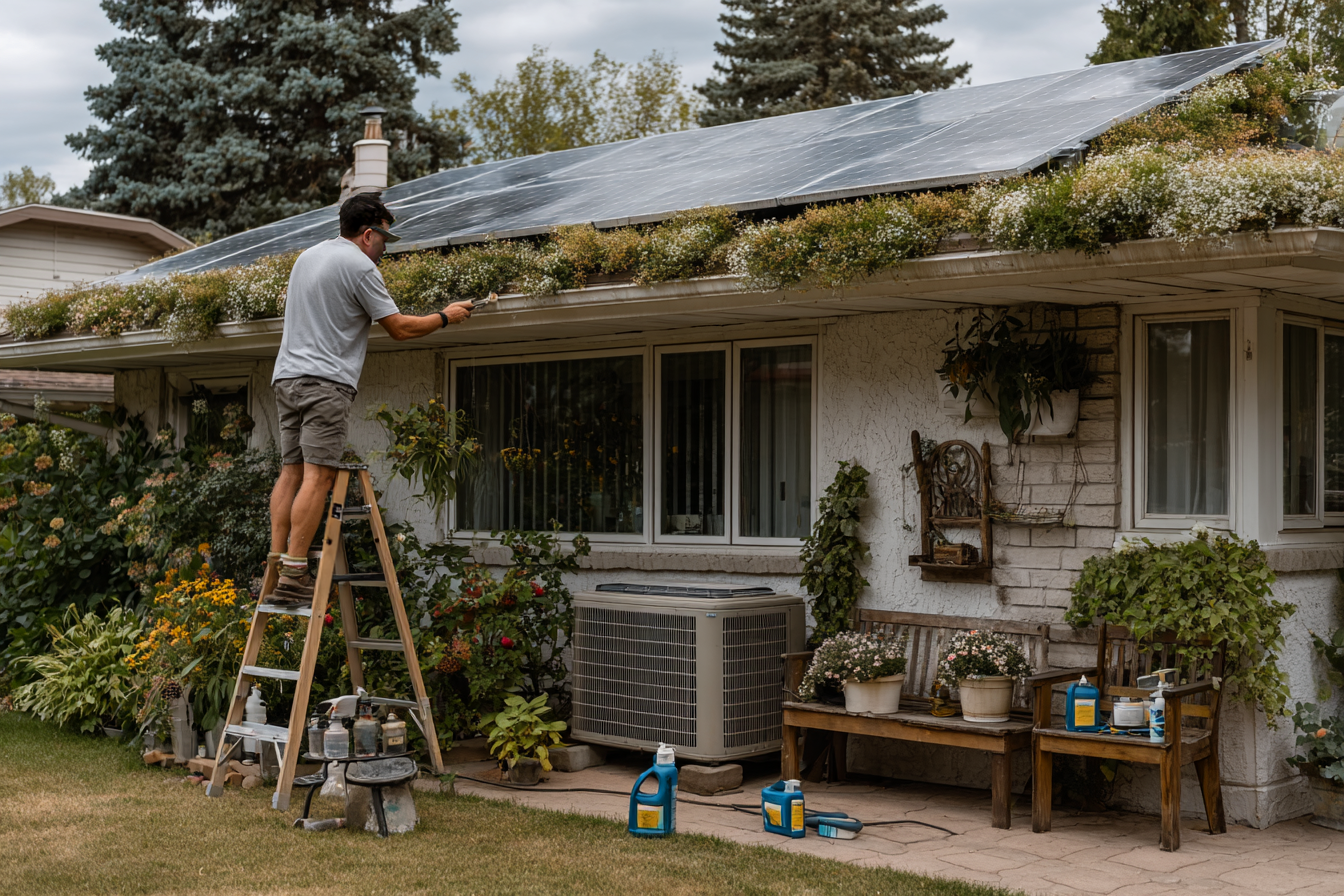DIY vs. Pro: What Maintenance Tasks Can You Handle Yourself?

Written by Solenery
2 min read
Introduction
Solar panels and heat pumps don’t need daily attention—but like any major system, they do need regular care.
So the big question is: what can you safely do yourself, and when should you call a professional?
This guide breaks down common solar and heat pump maintenance tasks for Canadian homeowners, helping you decide which ones you can tackle on your own and which ones are better left to certified pros.
Whether you’re a hands-on DIYer in Saskatoon or a cautious homeowner in Toronto, we’ll help you protect your system without risking your safety—or your warranty.
What You Can Safely Do Yourself
These are low-risk tasks that most Canadians can handle with basic tools and a little caution:
Solar Panels:
Snow removal with a telescopic solar rake (never climb the roof)
Rinsing panels with a soft sponge and hose (avoid harsh detergents)
Monitoring performance through apps like Enphase or SolarEdge
Heat Pumps:
Filter cleaning or replacement every 1–2 months
Checking airflow by keeping vents and outdoor units clear
Visual inspection for debris, loose wires, or strange noises
Example:
In PEI, a homeowner used a long-handled brush to gently remove sea salt buildup from their outdoor coil—no tech needed.
What’s Risky or Easy to Mess Up
Some tasks seem easy but can lead to damage or void warranties if done incorrectly:
Panel pressure-washing: Can crack glass or damage seals
Opening electrical boxes or inverter casing
Using bleach or abrasives to clean indoor HVAC components
Forcing stuck fan blades or resetting refrigerant lines
Ontario warning:
DIY refrigerant handling is illegal and hazardous—always call a licensed HVAC technician.
When to Call a Pro (and What They’ll Do)
Annual Solar System Check-Up (Pro Tasks):
Test inverter and microinverter performance
Check roof mounts, flashing, and wiring
Clean and inspect connectors and monitoring software
Annual Heat Pump Service (Pro Tasks):
Measure refrigerant levels
Inspect coils and drainage lines
Check for electrical faults or loose components
Verify defrost cycle and efficiency under load
Tip:
Many installers offer seasonal tune-up packages starting at $150–$300/year, which can pay for themselves by avoiding future repair costs.
Tools You Might Want (But Don’t Need)
If you’re into energy DIY, consider these optional tools:
Smart plugs (e.g. Kasa or Wemo) for tracking device energy use
Monitoring apps from Emporia, Sense, or your utility dashboard
Solar snow rake with rubber edge to avoid scratching panels
Non-abrasive brushes and microfiber cloths for heat pump coil cleaning
But remember:
the best “tool” is knowing when not to push your limits.
DIY + Pro = Best of Both Worlds
Combine regular self-checks with pro maintenance for a smart long-term strategy:
You clean filters, clear snow, and monitor your app monthly
A technician checks everything deeper once a year
You stay in warranty, reduce repair risk, and stretch the life of your system
Real-world example:
A Calgary couple did monthly DIY panel checks and booked annual pro service—resulting in zero downtime during 3 harsh winters.
Conclusion
You don’t need to be an engineer to keep your solar panels and heat pump running smoothly.
A few basic DIY habits, paired with occasional expert service, are all it takes to protect your investment and save money year-round.